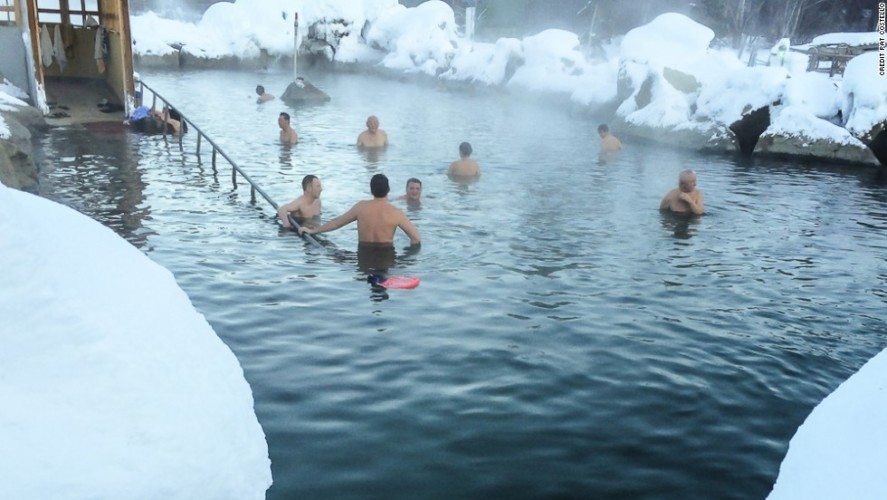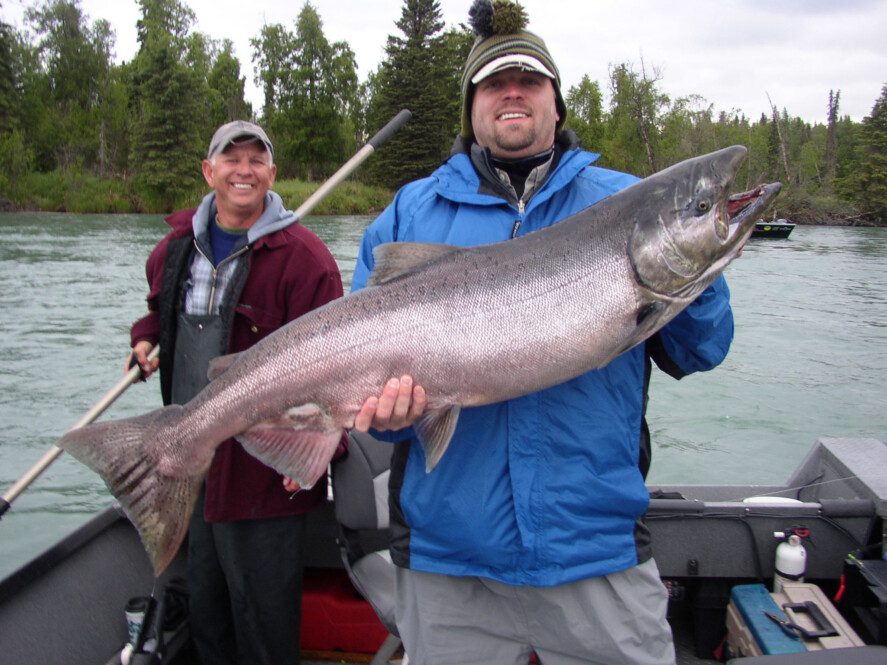In Alaska, the hottest fashion trend is warmth.
Saying that Alaska’s weather is wild is the most accurate meteorological forecast ever. In fact, Alaska is a land of extreme weather that can change fast and swing unpredictably. T-shirts and sunburn in March? It’s a thing! Ask any happy Alaskan skier. Facing a real-life “snow globe” moment while hiking Flattop near Anchorage – in July? Those frosty summer swirls aren’t so unusual in Alaska, as crazy as it sounds. Sunglasses and short-sleeves while dining on a deck in the fall? That’s living the best Alaska life, hands-down. A hailstorm during a sizzling summer day in Fairbanks? Bet on it. And while the Midnight Sun summer party vibe is unstoppable, some Interior thunder, lightning and even hail can certainly dampen even the merriest of festivities.

Chena Hot Springs outdoor pool
Because of these consistent inconsistencies when it comes to the 49th state’s moody climate, Alaska visitors face a clothing challenge of finding the comfort sweet spot, while avoiding the extremes of sweating or shivering. No matter the location or elevation, time of the day or season of the year, smart clothing packing and dressing is a game-changer for any Alaska vacation and an essential ingredient to a happy stay.
The sun might hang high in the sky during Alaska’s summers, but it won’t always send enough heat to keep you warm, especially in the evening. You can explore a glacier, take a hike, reel in a rainbow trout, or bask in a beach walk on a perfect summer day and feel content in a short-sleeve shirt and shorts … until a light but goose-bump-inducing breeze puts a freeze on the day. Of course, spring, fall and winter feature steady stretches of temps that hover at or below freezing, while spring, summer and fall can offer a daily roller-coaster ride between the 40’s to 80’s.
So go ahead and pack your jeans, T-shirts and shorts. This is vacation, after all. But before you travel to Alaska, also consider these clothing pro tips that will prepare you for Alaska’s always interesting, if not wacky, weather.
Love your layers.
The best way to stay happy and comfortable while wandering Alaska is by packing clothing layers. This might seem like simple advice and even excessive to some, but it’s critical for comfort and easy to execute. When a breeze blows in some Midnight Sun cloud coverage, a set of light and breathable underwear tops and bottoms to slip on beneath standard attire is essential. A light windbreaker and wind pants combo take inner temps to the next level. And yes, it’s best to bring an extra pair of socks. But what about overheating? Well, the best thing about layers is you can always take them off and on as needed. It’s better to head out for your Alaska adventure with these layers stacked neatly in your daypack in case you need them than to not have them and potentially spend a moment or a day miserable or missing out.

Bundle up for the best in Alaska fishing for King Salmon!
Hoods are good, fleece is fantastic.
Yes, technically hooded sweatshirts and fleece tops are layers, but they deserve their own category because they are the ultimate in utility and usefulness for Alaska travelers. They are easy to slip on and can quickly make your core and extremities oh so warm. Slide your hands into the pockets for prompt protection; flip up your hood, and suddenly your ears and head are shielded, too. Still a chill in the air? Pull your windbreaker over the hoodie or fleece and you’ve built an impenetrable fortress of balminess. Don’t need that extra layer at the moment? That’s cool. Tie your hoodie or fleece around your waist, or tuck them in your daypack, and simply reapply in the event of a chill.
The shoes to choose.
Many travelers like to go light and look at every square inch of packing space as precious. But if you are to overpack any clothing article, make it shoes. One pair should be your daily gamers: comfortable kicks you’ll spend wearing and walking in during the majority of your trip. If you plan on getting off the paved paths at any point, you’ll wish you were wearing a pair of sturdy, supportive and broken-in outdoor shoes or hiking boots. If you can’t function normally with a regular workout, your running shoes must come with, as well – and imagine the things you’ll see in just a 30-minute power walk or jog around Alaska. And finally, some people just don’t feel right dining out or going out on the town without a pair of fancy footwear, so make space for those if you must. Then again, in Alaska the focus is on the food, friends and fun not the feet. Here, it’s not unusual to catch well-heeled couples scarfing bacon burgers and sharing a pitcher of Alaska-made craft beer at a dive bar or seeing fresh-off-the-trail hikers in dirty boots or just-off-the-banks fishermen in crusty boots at a fancy foodie spot.

Hiking near Tutka Bay in Kachemak Bay in Southcentral Alaska
Christmas in June?
Packing a winter cap and a pair of winter gloves might seem unnecessary or even silly for a summer vacation. But if you plan on hiking or fishing, waking up early or staying up late, spending a day watching wildlife, cruising the state fair or even taking a walk in Alaska, these traditional winter wears are worth their weight in warmth. And they’re also small, so they won’t take up much valuable packing space. At the first feel of a chill, you’ll be glad you brought them.
Put a lid on it.
Sunglasses are cool and among the Vacation Packing 101 fundamentals if you’re coming to Alaska. But you’ll also want to consider another level of sun-blockage: bringing a baseball cap, too. While wonderful, that Midnight Sun is also unrelenting. A baseball cap provides extra shade that will keep you cool, block the UV rays, and block the glare whether you’re out for a walk, on a lake or river, or navigating your rental car along unfamiliar roads. A hat is great for keeping your hair under control on a windy day or a day-long adventure, too. Even better, it keeps mosquitoes off your head, if you happen to wander into a cloud of them (a likely event).
Don’t worry if you forget some clothing or don’t have a particular item in your go-to wardrobe when you get to Alaska. There are outfitters all across Alaska that will gear you up and help keep you comfy, including plentiful options in the downtown areas of most Alaskan cities and towns.

